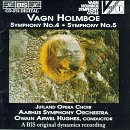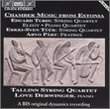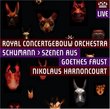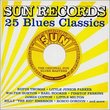| All Artists: Vagn Holmboe, Owain Arwel Hughes, Århus Symphony Orchestra Title: Vagn Holmboe: Symphony No. 4 "Sinfonia Sacra", Op. 29 (1941, rev. 1945) / Symphony No. 5, Op. 35 (1944) - Owain Arwel Hughes Members Wishing: 1 Total Copies: 0 Label: Bis Release Date: 1/4/1994 Album Type: Import Genre: Classical Styles: Historical Periods, Modern, 20th, & 21st Century, Symphonies Number of Discs: 1 SwapaCD Credits: 1 UPC: 750582508325 |
Search - Vagn Holmboe, Owain Arwel Hughes, Århus Symphony Orchestra :: Vagn Holmboe: Symphony No. 4 "Sinfonia Sacra", Op. 29 (1941, rev. 1945) / Symphony No. 5, Op. 35 (1944) - Owain Arwel Hughes
 | Vagn Holmboe, Owain Arwel Hughes, Århus Symphony Orchestra Vagn Holmboe: Symphony No. 4 "Sinfonia Sacra", Op. 29 (1941, rev. 1945) / Symphony No. 5, Op. 35 (1944) - Owain Arwel Hughes Genre: Classical
Holmboe's Fourth is a choral symphony on sacred texts that makes an immediate and overwhelming impact. There's nothing in it beyond the range of most amateur or semi-professional choral societies, and it would make a ter... more » |
Larger Image |
CD DetailsSynopsis
Amazon.com Holmboe's Fourth is a choral symphony on sacred texts that makes an immediate and overwhelming impact. There's nothing in it beyond the range of most amateur or semi-professional choral societies, and it would make a terrific first half to a program that included some other choral favorites, like Orff's Carmina Burana or Stravinsky's Symphony of Psalms, which it in some ways resembles. The Fifth, by contrast, was the work that put Holmboe on the international map as a symphonist. It's a sturdy, tuneful piece with a particularly vital sense of rhythm, and it's magnificently performed and recorded here. Great music. --David Hurwitz Similar CDs
|
CD ReviewsNo.5 is mandatory listening. Recording average. i.jenkins@virgin.net | Goring on Thames, England | 01/15/1999 (4 out of 5 stars) "I've known #5 since a BBC broadcast by the BBC Welsh SO with the late Bryden Thomson in the mid 80's. The opening movement has so much momentum and logical discourse that you wish everyone could hear it. The middle movement has a lot of power but Hughes overdoes the orchestral outburst half way through. The finale has been criticised for being bombastic but I love it, Unfortunately, Hughes doesn't understand this movement and misses the fun and games. The fourth symphony is relatively immature, full of curious choral outburst that don't really work for me. The recording is a little reverberant and the quality of orchestral playing is only average. In the absence of any other recordings of #5 however, this must go down as important listening." A Fine 20th Century Composer in the Wings Grady Harp | Los Angeles, CA United States | 05/09/2006 (4 out of 5 stars) "Vagn Holmboe may not be a composer whose name comes immediately forward in discussions of 20th century composers, but hopefully some enterprising conductor will take him on and start what would probably be a popular support for this composer's work. A Danish composer (1909 - 1996) Vagn Holmboe was prolific, writing 13 symphonies, 20 string quartets, many chamber concertos and choral works and was clearly in the vein of his fellow Nordic composers whose works have become standards in the repertoire.
Holmboe's music is tonally based and deals with fragments of melody, some resolved, some left as segue into further fragments. His use of the full percussion array is quite spectacular and his sense of painting the spacious atmospheres so closely associated with the Nordic music is exciting. He lived through wars and experimental musical changes and the influence of these is evident in the power of his symphonies. Yes, there are definitely traces of Sibelius, Nielsen, Janacek and Shostakovich and his penchant for incorporating folk melodies and rhythms is not unlike Kodaly and Vaughn Williams. But he does have a place along side his more famous colleagues. Symphony No. 4 'Sinfonia Sacra' was written in honor of his brother who died in a concentration camp in 1944. The text, divided into six sections, is written by the composer and deals with fear, dark, anguish and all the feelings that war engenders and ends in a plea of peace. The texts were translated into Latin in order to make the work more universal. After a harsh military opening the chorus expresses the sense of loss and terror. The remaining movements alternate slow, gentle adagio type musings with moments of praise and exaltation, ending in a Laudate Dominum that is deeply touching. The Jutland Opera Choir sings with commitment and Owain Arwel Hughes conducts the Aarhus Symphony Orchestra of Denmark with obvious dedication to this work. Symphony No. 5 is purely symphonic and the orchestration is richly composed, pulsating varying sections of the orchestra with isolated leading melody lines exchanged among strings, brass, winds, and percussion. There is a clear similarity to the symphonies of Carl Nielson here and the comparison is a fair one. Holmboe knew how to manage the big orchestral sound and seemingly endless phrases that suddenly are augmented by moments of reverie. For this listener it seems that with more exposure of Vagn Holmboe's music he may well step into the important echelon of 20th century composers. Highly recommended. Grady Harp, May 06" |

 Track Listings (9) - Disc #1
Track Listings (9) - Disc #1



